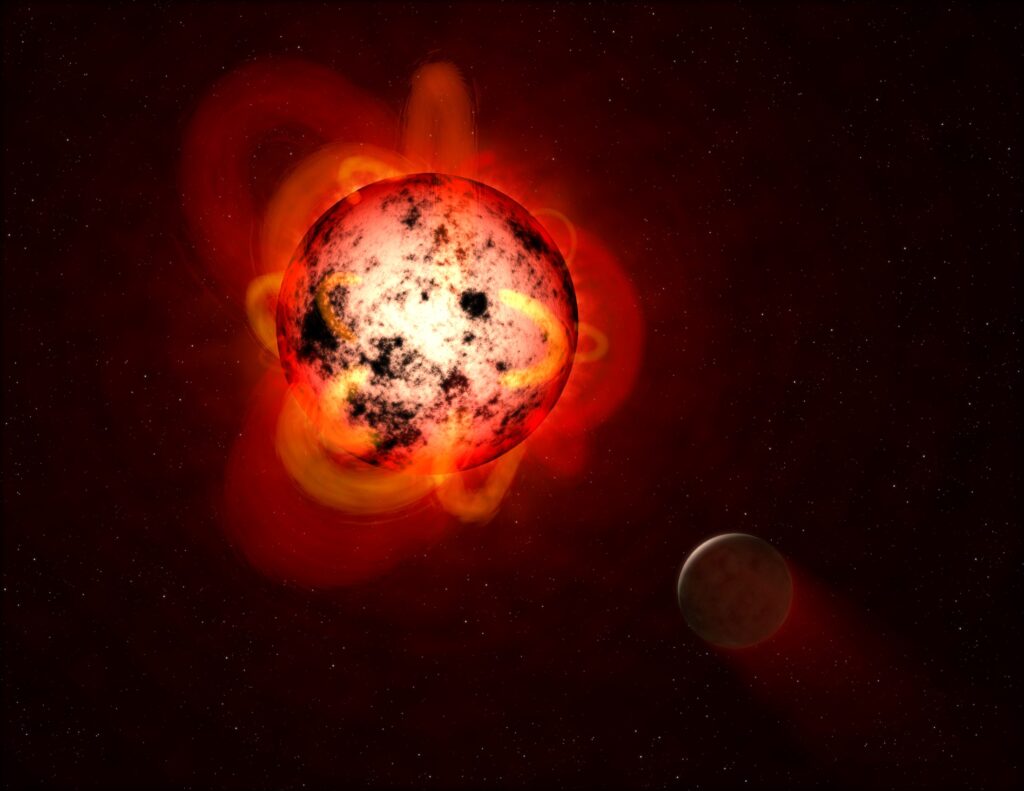A team of researchers from the Max Planck Institute for Astronomy reported the discovery of a previously unknown exoplanet. It orbits the star Wolf 1069, located at a distance of 31 light years from Earth.

Wolf 1069 is a low-mass red dwarf. Its mass is 16% of the mass of the Sun, its radius is 18% of the radius of the Sun. Most likely, Wolf 1069 is much older than our native star and its age lies in the range of 7-11 billion years. This is indicated by the fact that compared to most other red dwarfs, it shows minimal activity. In favor of a significant age, Wolf 1069 also indicates its rotation period, which ranges from 150 to 170 days. For comparison, the average rotation period of the Sun is 28 days (25 days for the equator, 38 days for the polar regions).
During the observations of Wolf 1069 made using the CARMENES spectrograph, the researchers found deviations in the radial velocity of the star, indicating the presence of an invisible companion, designated Wolf 1069b. Its mass is 1.36 Earth masses. It is almost certainly a rocky exoplanet.
The orbit of the newly found exoplanet lies at a distance of 0.0672 AU (10 million km) from the red dwarf, its orbital period is 15.6 days. With a high degree of probability, it is in tidal capture. According to astronomers, the illuminated side of Wolf 1069b receives approximately 65% of the energy that gets to the Earth from the Sun. And this means that if there is a suitable atmosphere, water in liquid form can exist on it. Thus, Wolf 1069b ranks sixth in the list of the closest known exoplanets to us, which orbit passes in the habitable zone.
Unfortunately, Wolf 1069b is not a transiting planet, which makes it impossible for astronomers to determine if it has an atmosphere. But the researchers intend to continue its observations. Perhaps more powerful telescopes of the next generation, like the ELT being built in Chile, will shed light on the nature of this world.
Earlier we talked about the discovery of an exoplanet with signs of thermonuclear fusion.
According to https://arxiv.org
Follow us on Twitter to get the most interesting space news in time
https://twitter.com/ust_magazine

